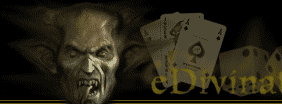 |
|||||||||||||||||||||||||
|
|
|
|
|||||||||||||||||||||||
|
|
|
|
|
|
|
|
|
||||||||||||||||||
|
|
|||||||||||||||||||||||||
|
|
|||||||||||||||||||||||||
|
|
|
|
|
|
|
|
|
|
|
|
|
|
|
|
|
||||||||||
|
|
|
|
|
|
|
|
|
|
|
|
|
|
|
|
|
|
|
|
|
|
|
|
|
|
|
|
|
|
|
|
|
|
|
|
|
|
|
|
|
|
|
|
|
|
|
|
|
|
|
|
|
|
|
Psychic, Occult and Mystical Definitions
|
| Allegedly, a creature described as being sea-serpent-like and at least thirty feet long that supposedly inhabits the White River (a tributary of the Mississippi) in the area near Newport, Arkansas. |
White River Monster |
|
|
|
Wicca |
Early English (Saxen) term for witch, derived from a German root word meaning "to twist or to bend." Also used to denote the witch religion, a neopagan nature religious practice having its roots in pre-Christian western Europe and undergoing a 20th century revival, especially in the United States and Great Britain.
Wiccans speak of the year as a wheel; their calendar is a circle, signifying that the cycle of seasons turns endlessly. Almost evenly spaced around the Wiccan Wheel of the Year are the eight Wiccan feast days, or sabbats. The sabbat cycle is a retelling and celebration of the age-old story of the Great Goddess and her son and consort, the Horned God. Wiccans sects cherish a host of variations on this myth. The coincidence of these festivals to Christian holidays, and the similarities between Wiccan and Christian symbols, say many anthropologists, are not accidental, but prove the preexistence of the pagan beliefs. For Christian authorities contending with older religions during Europe's Dark Ages, converting established holidays by giving them new Christian meanings eased the acceptance of the new faith. |
|
In European folklore, a werewolf is a man who at night transforms himself or is transformed into a wolf (a process called lycanthropy) in form and appetite, and roams at night in search of human victims to devour. This transformation was either temporary or permanent, and was supposedly brought about by supernatural influences, by witchcraft, or voluntarily.
The werewolf must return to human form at daybreak by shedding his wolf's skin and hiding it. If it is found and destroyed, the werewolf dies. A werewolf who is wounded immediately reverts to his human form and can be detected by the corresponding wound on his body. Similar creatures exist in folklore worldwide: the tiger, boar, hyena, and even the cat, are 'wereanimals' in areas where wolves are not found. Belief in wer (or man) animals was common in the Middle Ages, and was probably a relic from early cannibalism. |
Werewolf |
|
|
|
Warlock |
A wizard, a sorcerer, a magician, a male witch; an evil spirit; a sprite; an imp; a man who holds the key that unlocks secret and supernatural powers; a man who practices black magic; a man who practices magic and/or witchcraft; one skilled in the magical arts.
The word represents Old English wśrloga, 'traitor', 'the one that breaks faith', literally 'oath liar'. The term was used to describe men who pretended to be witches in order to penetrate covens and betray them during the Burning Times. There are black and white magicians. The white magician uses his powers and knowledge to help others, humankind in general, and the universe. His goal is to further harmony and enlightenment to as many and as far as he possibly can; and above all, to ward off calamities and misfortune. The black magician is, quite simply, a man who wants power for himself, for self-aggrandizement. He wants to be able to vent his spite on enemies and to satisfy all his desires, with complete disregard as to the amount of suffering and agony he unleashes upon the innocent. They are usually defined as those who have made a pact with the Devil but this is not necessarily the case. A magician or warlock may summon the Devil or one of his demons and remain a white magician, so long as his purpose is benevolent. On the other hand, a magician may have no interest in the Devil or may even deny his existence, but if his intentions are malicious and self-centered, he is a black magician. |
|
|
|
|
|
|
|
|
|
|
|
|
|
|
|
|
|
|
|
|
|
|
|
|
|
|
|
|
|
|
|
|
|
|
||||||||||||||||||||||||||
|
|
||||||||||||||||||||||||||